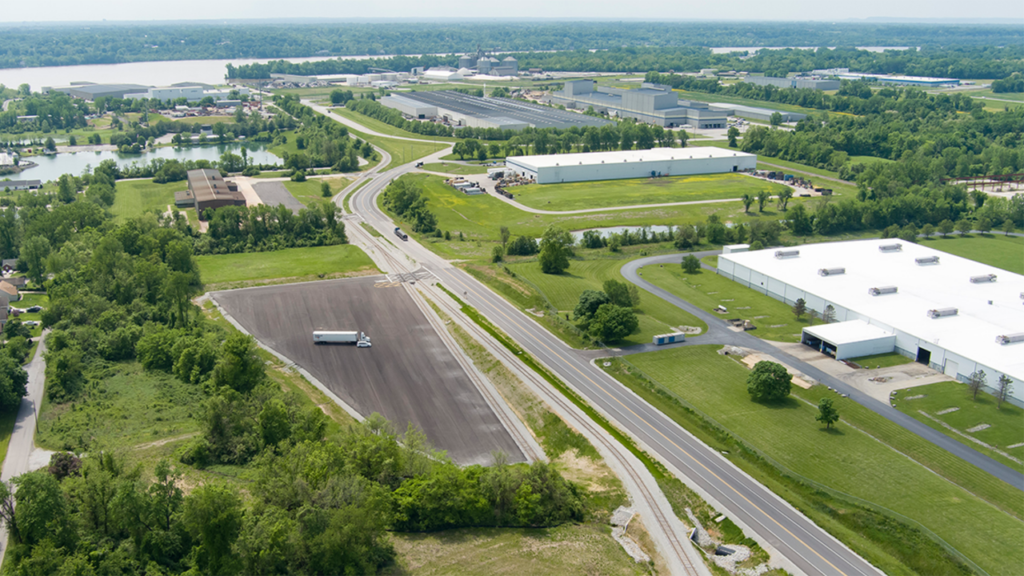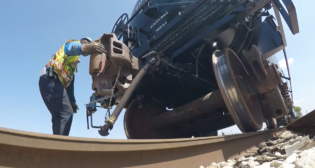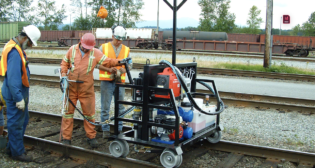
Intermodal Roundup: Port of Los Angeles, Ports of Indiana
Written by Marybeth Luczak, Executive Editor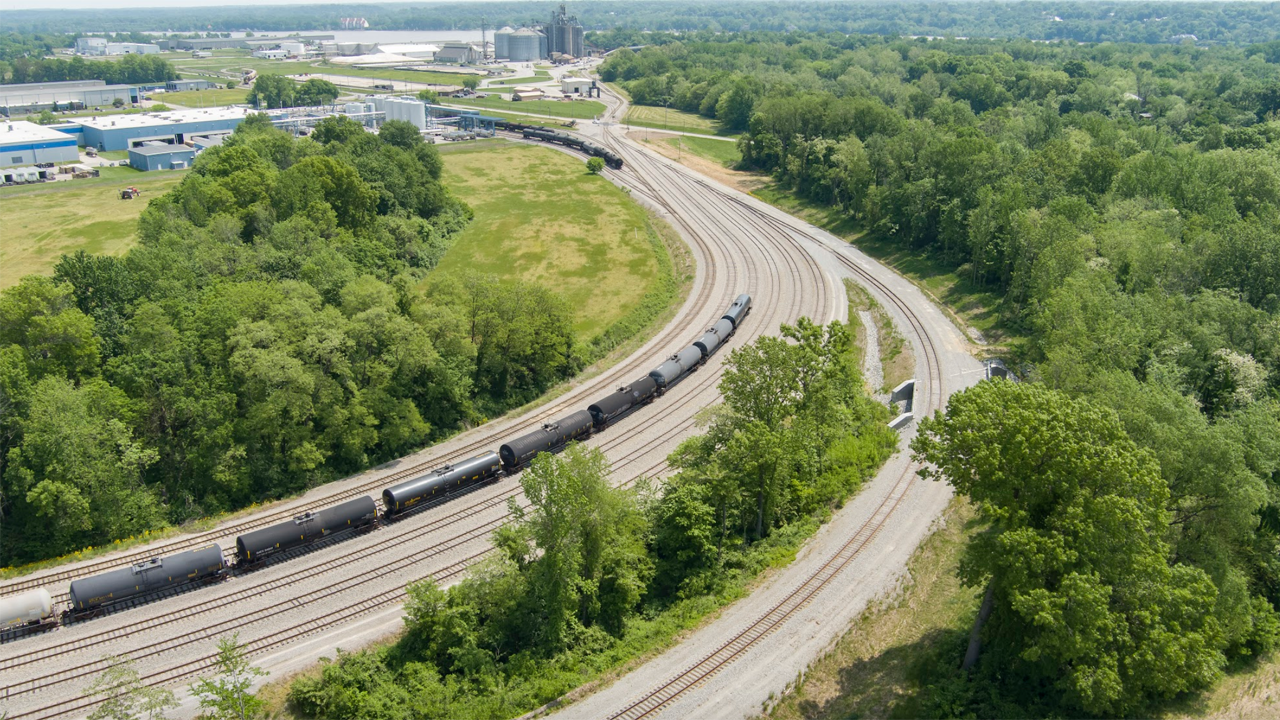
The Ports of Indiana-Jeffersonville has added four miles of track to accommodate unit train delivery to and from the port, along with two new rail loops connected to the waterfront intermodal facility. (Photo Courtesy of Ports of Indiana-Jeffersonville)
The Port of Los Angeles (Calif.) is allocating $34.3 million to Pier 400 Corridor Storage Track Expansion in its FY2022-23 budget. Also, the Ports of Indiana-Jeffersonville (Ind.) added four miles to its existing 11-mile rail network along with two loop tracks as part of a $24 million investment in capacity improvement projects.
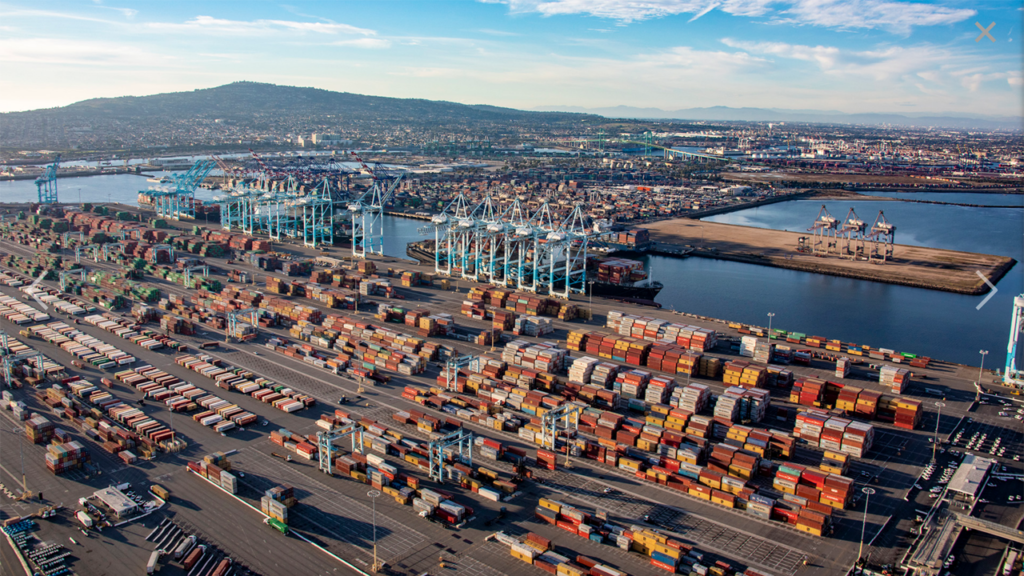
The Los Angeles Board of Harbor Commissioners has adopted a $1.9 billion FY22-23 budget for the Port of Los Angeles. The budget is based on cargo volume estimates of approximately 9.85 million TEUs (twenty-foot-equivalent units) as “pandemic-induced consumer buying [is] expected to ease in the coming fiscal year,” the Port reported June 8.
The budget outlines operating revenues of $628.1 million, including $439.7 million from shipping revenues; $47.4 million from the Clean Truck Fund; and the remainder from rentals, royalties and fees, and other operating revenue categories. Operating expenses are expected to reach $334 million.
The Port’s Capital Improvement Program (CIP) includes $180.5 million for terminal, transportation, security and public access projects. Among them:
• $34.3 million for Pier 400 Corridor Storage Track Expansion. To accommodate future rail volumes on Terminal Island, the project includes an extension to the existing rail bridge; five new rail storage tracks, totaling more than 31,000 linear feet, which will be added to the current six tracks; an asphalt access roadway; new crossovers and switches; and modifications to the existing compressed air system of the Pier 400 rail storage yard and bridge. Work also includes the relocation of a portion of the Pier 400 lead track onto Port property, realignment of the track connection to the existing rail storage yard, modifications to Reeves Avenue, and relocation of the existing at-grade crossing at Nimitz Avenue to Reeves Avenue. Total cost is estimated at $61.4 million. The Port in 2018 received a $21.6 million grant from the State Road Repair and Accountability Act of 2017 (Senate Bill 1)-Trade Corridor Enhancement Program (TCEP) for the project.
• $17.4 million for improvements at the Shell and PBF marine oil terminals.
• $38.4 million for LA Waterfront improvements, of which $25.3 million will go to the Wilmington Waterfront Promenade project.
Since FY1998/99 and projecting through FY2025/26, the Port said it will have invested more than $4 billion in CIP.
Among the environmental programs in the FY22/23 budget:
• The Clean Truck Program, which will “use fees collected to promote and incentivize the phase-out of older, more polluting trucks serving the San Pedro Bay port complex.”
• Near-zero and zero-emission technology demonstration projects. The Port is currently either leading or participating in 16 regional projects to demonstrate low NOx and zero-emissions trucks, yard tractors, forklifts and other equipment.
“Despite challenges across the supply chain, the Port of Los Angeles and its many partners persevered and have kept cargo moving at a record pace,” Harbor Commission President Jaime Lee said. “This success and hard work now allows us to reinvest in our Port’s physical and digital infrastructure, sustainable technology and programs, and in projects that benefit our communities and the LA Waterfront.”
In 2021, the Port handled a total of 10.7 million TEUs, which it said was the busiest calendar year in its 115-year history. In April 2022, it handled 887,357 TEUs. That was the Port’s second-best April, following April 2021, when it posted 946,966 TEUs. Four months into 2022, the port processed more than 3.5 million TEUs, 1% ahead of last year’s “record pace,” it reported last month.
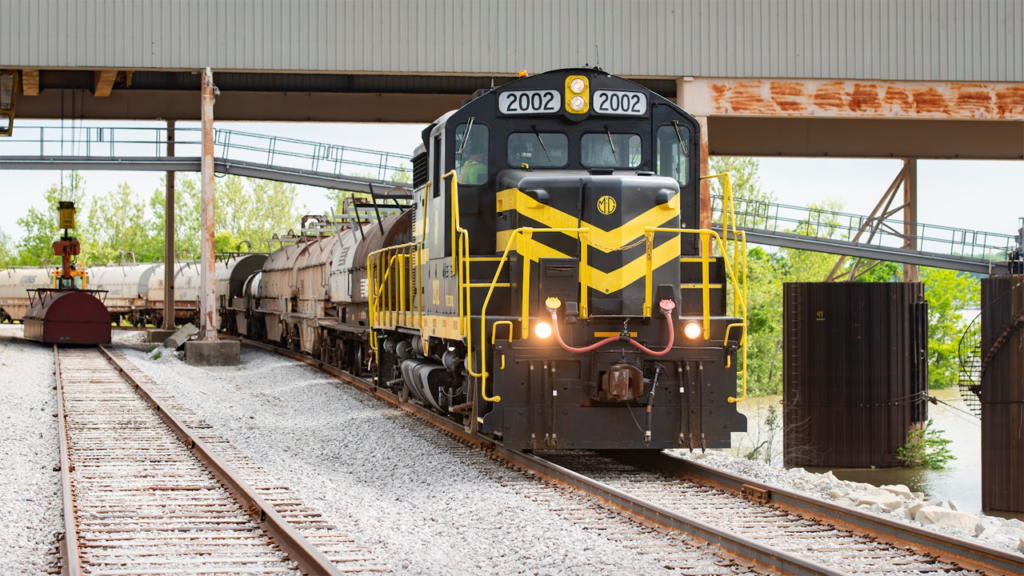
The Ports of Indiana-Jeffersonville—which handles Ohio River shipments of steel, agriculture and industrial cargo and provides more than 1,000 acres of industrial sites—has completed $24 million in infrastructure enhancement projects that have resulted in:
• Four miles of additional track to accommodate unit train delivery to and from the port, along with two new rail loops connected with the waterfront intermodal facility.
• The accommodation of 200 railcars in the rail yard.
• More than doubling the capacity of bulk commodities transferred from railcars or trucks to barges at the waterfront intermodal facility.
• A new conveyor belt running more than 2,000 tons per hour or one railcar to barge in fewer than three minutes.
• A three-acre transload facility that allows cargo to be transferred between trucks and railcars.
The projects were funded by a $10 million Transportation Investment Generating Economic Recovery (TIGER) grant awarded in 2015 by the U.S. Department of Transportation; $11 million from the Ports of Indiana; and $3 million from the private sector.
“The completion of the TIGER project is the result of the commitment that the Ports of Indiana has to best-in-class infrastructure and making our Indiana network bigger, better, faster,” Ports of Indiana CEO Vanta E. Coda II said. “This infrastructure will allow our current and future customers to grow for the next 50 years.”
The Ports of Indiana-Jeffersonville reported setting a shipping record of 3.22 million tons in 2021, up 21.6% from 2020. It is operated by the Ports of Indiana, a statewide port authority managing three ports (Jeffersonville; Mt. Vernon; and Indianapolis, Ind.) on the Ohio River and Lake Michigan.
